Gardening and Landscaping Practices for Nesting Native Bees
May 2015
James H. Cane, Research Entomologist, USDA ARS

Fig. 1. Brilliant green Agapostemon bee emerging from a ground nest in a suburban lawn.
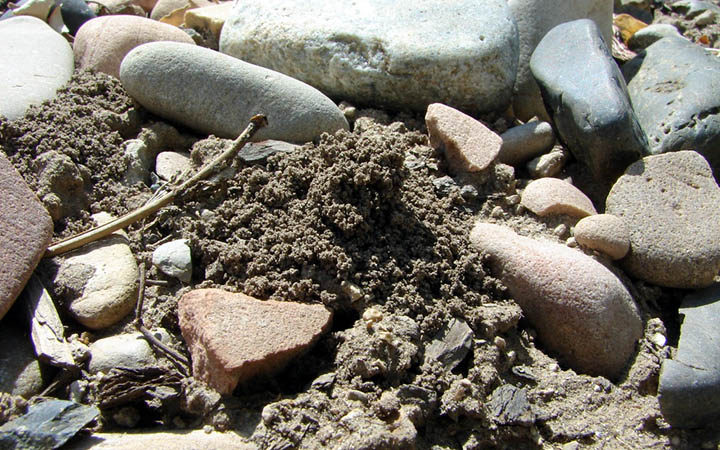
Fig. 2. Nest tumulus (soil heap) thrown up by the bee Halictus rubicundus nesting amid a decorative pebble mulch.

Fig. 3. Nest with cocoons of the bee Hoplitis sambuci excavated in the pith of a dead sumac twig.
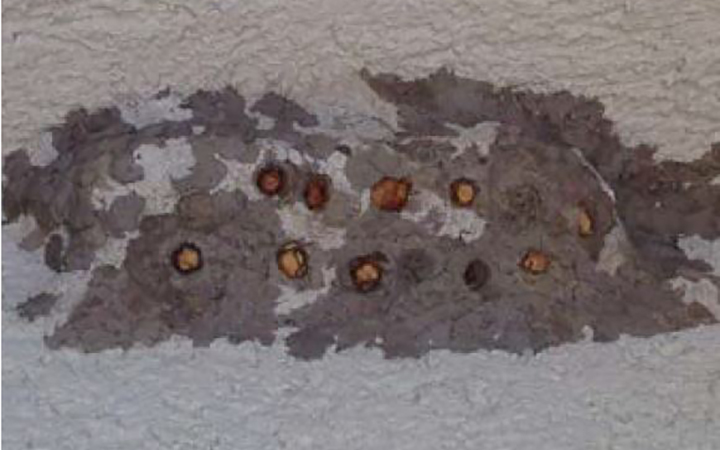
Fig. 4. Leafcutter bee cells in a mud nest built by dirt dauber wasps (photo courtesy of Diane G. Alston, Utah State University).

Fig. 5. A bare earth slope with nesting Halictus rubicundus bees was sodded in the fall to control erosion. Rather than sacrifice its nesting aggregation, however, a long strip of shallow rock pebble mulch was provided over bare soil. Several thousand emerging bees nested in the rock mulch strip the following spring.
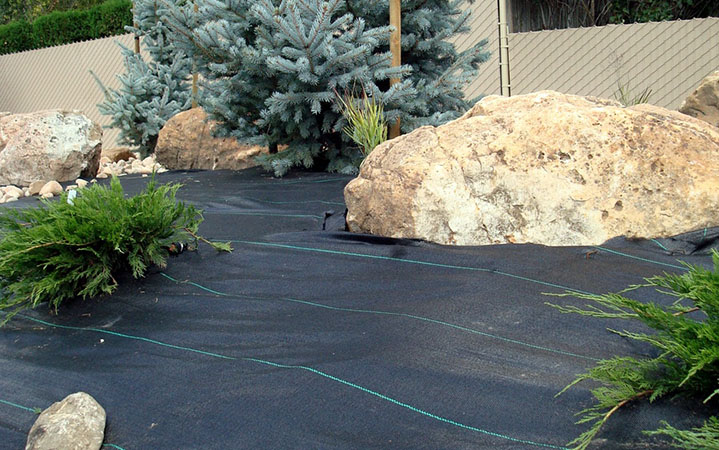
Fig. 6. Landscaping fabric, which ground-nesting bees are unable
to penetrate.
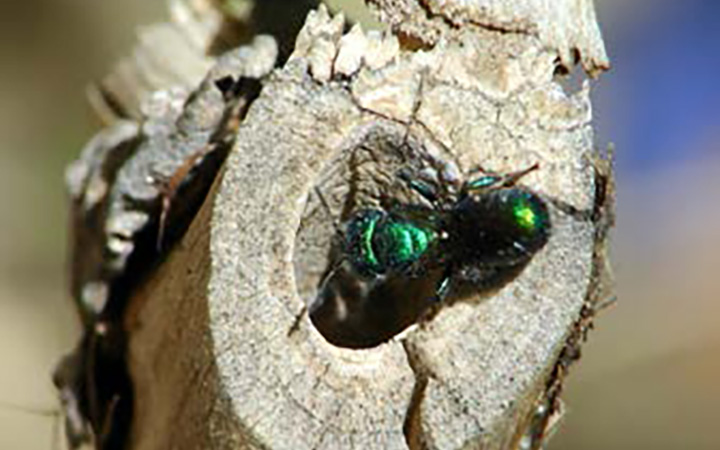
Fig. 7. The bee Osmia kincaidii returns to her nest in the hollow of
a dried forsythia stem.
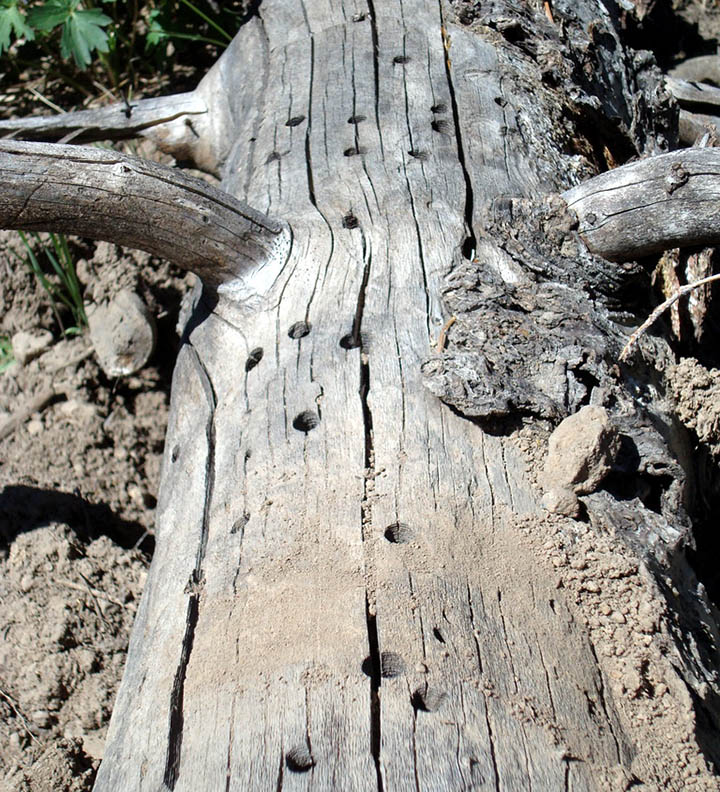
Fig. 8. Emergence holes of wood-boring beetles are often used by cavity-nesting bees.
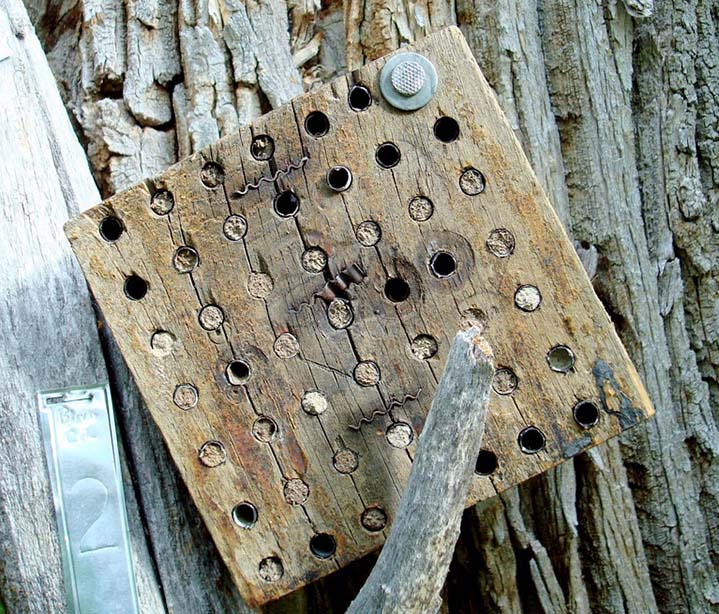
Fig. 9. Drilled wooden blocks can be used to satisfy the nesting needs of wood nesting bees.
Quick Facts
- About 1,000 species of native bees reside in Utah; few of them are social.
- Some wild bees excel at pollinating Utah’s tree fruits, raspberries, squashes, melons and cucumbers.
- Most of these native bees nest solitarily underground.
- Others nest above ground in pithy or hollow dry stems, or in beetle burrows in sound dead wood.
- Simple landscaping and gardening practices can provide the essential nesting needs of many of our native bees.
Utah is home to about 1,000 named species of native bees, with several hundred species living in any one valley and adjacent montane habitats. Urbanization takes its toll on native bees, but many species can persist with a little help from gardeners and landscapers. Like birds, bees have two primary needs in life: Food (for a bee, pollen and nectar) to feed themselves and their offspring, and a suitable place to nest. An earlier fact sheet (Gardening for Native Bees in Utah and Beyond) offers a rich tapestry of garden flowers that provide bees with nectar and/or pollen. We know far less about accommodating the nesting needs of our native bees, but there are certain practices that favor or disfavor their nesting.
Ground Nesting
At least three-fourths of our native bee species nest in the ground. Among these, only some sweat bees and all bumblebees are social; the rest are solitary, meaning that each female has her own nest. Ground-nesters make a cylindrical nest tunnel. On flat ground, the entrance is typically centered in a small cone of excavated soil that remains until removed by rain or wind. Diverse insects also tunnel in soil, however, so to be certain that it is a bee’s nest, the resident bee must be seen coming or going.
Attractive Substrates
Nest sites of seemingly suitable soil can be created, but many years may pass before the site is discovered by a colonist bee. Moreover, nests of many bee species have never been seen or described. For these reasons, there is little experimental evidence to guide gardeners and landscapers in the creation of attractive soil substrates for bees. Recent research shows that at least one common ground-nesting bee, Halictus rubicundus, prefers to nest amid a sparse surface mulch of stream pebbles or cobbles rather than in mere bare ground (Figs. 2 & 5). Vertical banks of heavier soil, if at least a foot high, will attract nesting by some bees, especially various sweat bees. In nature, these bees like to nest in cut-banks of streams. Keeping some small patches of well-drained bare sunny soil surfaces can attract nesting too.
Landscaping Practices to Avoid
Sprinkler irrigation. Most advice about soil substrates for bees describes practices to avoid. In Utah, irrigation is ubiquitous. Bees seem able to perceive imminent rainstorms, and will race home ahead of the downpour. Consequently, when the rainstorm ends, females can dig upwards and emerge from their nest to orient and continue foraging. In contrast, sprinkler irrigation offers no such warning cues to a foraging female. Females returning to an irrigated nest site are confronted with mud, altered visual landmarks, and obliterated nest entrances. Too often a poor female remains lost and ultimately abandons her nest altogether. Therefore, avoid overhead irrigation during daylight hours — water at night when mother bees are home, or use drip during the day.
Weed barrier fabric. Impervious surfaces preclude ground-nesting. Pavement obviously is a problem, although surprisingly, some species readily use a gravel tire track or dirt road. Buried or surface weed-barrier fabric is just as impervious for a bee as pavement (Fig. 6). Use it judiciously, not ubiquitously. Weed barrier is impenetrable for all other burrowing invertebrates, too, notably earthworms. Soils beneath weed barriers become compacted and less permeable with time.
Thick turf and mulch. Bees generally will not nest in thick turf, presumably owing to its dense tangle of fine shallow roots. As with weed barrier, dense turf has its place. If you are already gardening for bees, then the gardens themselves can offer soil surfaces suitable for bee nesting, provided that they are not too thickly mulched. Thick mulches of bark, wood chips or loose gravel are likewise impenetrable for ground-nesting bees. This fact can be used to persuade bees to abandon an inconvenient nesting site by simply strewing the mulch in the autumn. The following year, bees can emerge through it unscathed, but will fly elsewhere rather than return to nest.
Twig and Stem Nesting
There are more simple and effective options to accommodate twig- and stem-nesting bees in the garden. When pruning shrubs, note those that have hollow or pithy cores; some twig-nesting bees use these substrates. Instead of cutting dead stems to the ground when pruning or thinning, leave a foot-long stub for the bees. Small carpenter bees (genus Ceratina) will excavate nest cavities in dead pithy canes of raspberries and roses, or cut twigs of sumac, and dead stems of plume grass, fireweed, Russian sage, or even old flowering stalks of goldenrod, Echinacea and Iris reticulata (Fig. 3). Some species of Osmia and Hoplitis bees (smaller relatives of blue orchard bees) use dead hollow twigs, too, such as those of the larger stems of forsythia, or bamboo garden stakes if not cracked (Fig. 7). There is much opportunity for new observations and experiment here.
Wood Nesting
Other species nest in wood. Large carpenter bees chew their own burrows in sound wood. In Utah, they are limited to the southern counties. Other wood nesters (e.g., mason bees, leaf-cutting bees, solitary wasps) adopt burrows left by wood-boring beetles in dry deadwood and sometimes other cavities (Fig. 8). Their local nesting needs can be met using drilled wooden blocks with paper straw liners, cut reeds or hard paper tubes of suitable dimensions (Fig. 9). Regular sanitation and replacement of nesting substrates, such as straws, is necessary to help check multiplication of their diseases and parasites.
Unlike most social wasps (e.g., yellowjacket, hornet) and bees (e.g., honey bee, bumble bee), these non-social bees have little, if any, venom in their weak stingers. They won’t sting you unless physically handled. Curiosity, not fear, should be your rational response to their presence in the garden.
Additional Resources
A selection from among the many new and useful references for further reading:
- Frankie, Gordon W., Thorp, Robbin W., Colville, Rollin E., and Ertter, Barbara. California Bees and Blooms: A Guide for Gardeners and Naturalists. Heyday Press, 2014.
- Grissell, Eric. Bees, wasps, and ants: The indispensable role of Hymenoptera in gardens. Timber Press, 2010.
Spevak, Edward M., and Arduser, Michael. Missouri Bee Identification Guide, Saint Louis Zoo and Missouri Department of - Saint Louis Zoo Conservation, St. Louis, MO.
- The Xerces Society. Attracting Native Pollinators: Protecting North America’s bees and butterflies. Storey Publishing, 2011.


